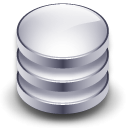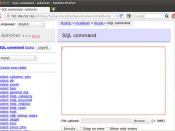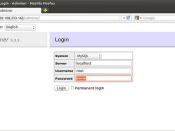A collection of programs that enables you to store, modify, and extract information from a database is considered a Database Management System. There are many different types of DBMSs, ranging from small systems that run on personal computers to huge systems that run on mainframes. The terms relational, network, flat, and hierarchical all refer to the way a DBMS organizes information internally. The internal organization can affect how quickly and flexibly you can extract information. The set of rules for constructing queries is known as a query language. Different DBMSs support different query languages, although there is a semi-standardized query language called SQL (structured query language). Sophisticated languages for managing database systems are called fourth-generation languages, or 4GLs for short. The information from a database can be presented in a variety of formats. Most DBMSs include a report writer program that enables you to output data in the form of a report.
Many DBMSs also include a graphics component that enables you to output information in the form of graphs and charts. 1
There are a number of advantages to the relational database model, such as built-in multilevel integrity, logical and physical data independence from database applications, guaranteed data consistency and accuracy, and easy data retrieval. 2 Traditional databases are organized by fields, records, and files. A field is a single piece of information; a record is one complete set of fields; and a file is a collection of records. A table refers to data arranged in rows and columns. A spreadsheet, for example, is a table. A table (known as a relation in relational database theory) is the chief structure in a relational database. It is composed of fields and records, the order of which is completely unimportant. A table always represents a single, specific subject, which can...


